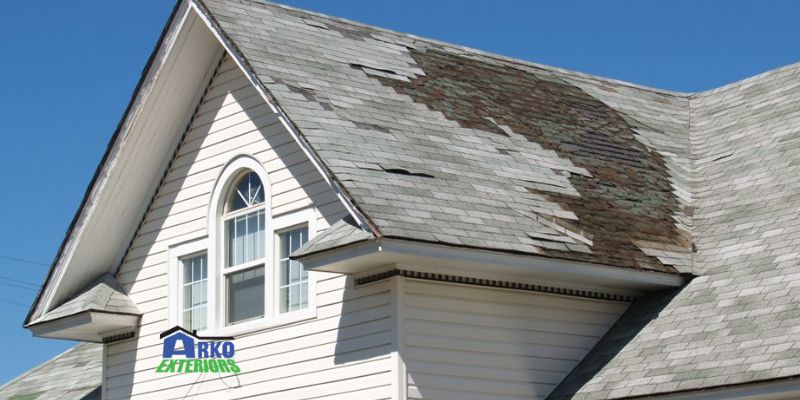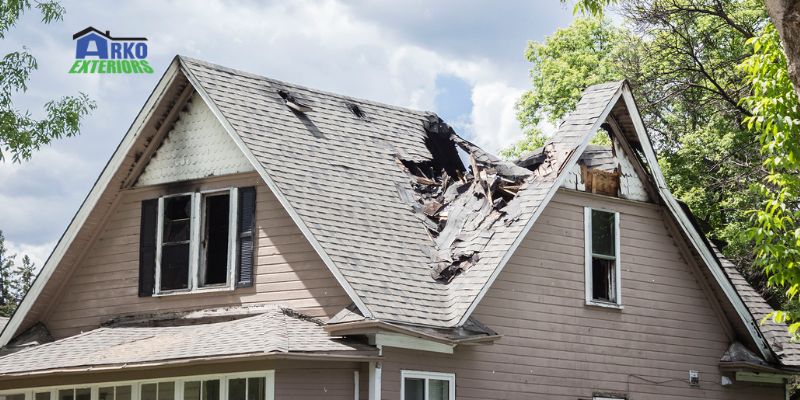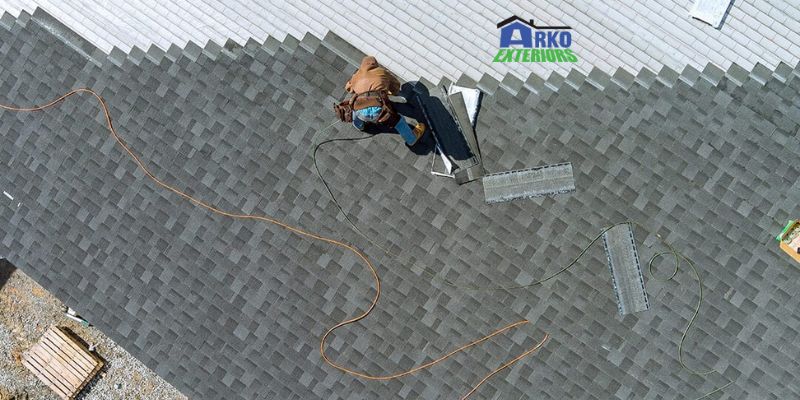The roof of your commercial building protects the interior from weather, water, and temperature changes. It acts as the main line of defense against the outside environment.
7 Signs You Need a Commercial Roof Replacement
Although a typical commercial roof can last anywhere from ten to forty years, this depends on the quality of the materials used and the maintenance. Over time, different environmental factors may cause the roof to deteriorate, necessitating replacement.
The following seven indicators should help you decide when determining whether a commercial roof replacement is necessary:
1. Old roof

Depending on the materials used and degree of maintenance, commercial roofs typically have a lifespan of 10 to 40 years or more. Careful maintenance can make this period much longer while negligence can make it shorter.
A professional roofer can detect possible issues and take appropriate action to address them before they become more serious and expensive to replace or repair. This can be achieved through routine inspections.
Additionally, maintenance can lower the need for replacements on your commercial roof, which will ultimately save costs. Better weather protection from the elements is another benefit of a well-maintained roof, which lowers the possibility of damage to your home and its belongings.
2. Low spots and stagnant water
If you notice low spots on your flat roof after a rain shower, it is an indication that something is wrong. These low spots can be caused by a variety of problems, such as damaged insulation or improper drainage.
If you ignore these problems, they will only get worse over time and could eventually lead to leaks or even structural damage to your roof.
The best way to address low spots on your roof is to call a professional roofing contractor. They will inspect your roof and determine the root cause of the problem. Once they know what is wrong, they can make the necessary repairs to ensure that your roof is in good condition.
3. You notice storm damage

Regardless of the material your roof is made of, it is not storm-resistant. Sleet, hail, and extreme heat can all pose potential threats to your roof, making it important to have a reliable roofing contractor on standby. In addition to external elements, high winds can carry debris that can cause additional damage to your roof.
To protect your roof from these challenges, regular maintenance, and thorough inspections are essential. By addressing any issues that arise and ensuring the integrity of your roof, you can extend its lifespan and reduce the risk of more severe damage.
Being alert and immediately requesting professional roofing services is essential. This will not only protect your investment but also contribute to the long-term resilience of your roofing system.
4. Roof blistering
Roof blistering, often referred to as “bubbling,” is a common issue affecting commercial membrane roofs such as PVC, TPO, and EPDM. These blisters form due to leaks between the membrane layers, poor installation, or inadequate ventilation. Areas with extreme seasonal variations, like Minnesota during the monsoon season, are particularly susceptible to blistering.
In such regions, close monitoring during heavy rainfall is essential. Minnesota’s cold, often frigid winters and hot, humid summers can trigger significant bubbling. It is important not to overlook even small blisters, as they can lead to extensive damage to your commercial roof’s surface if left unattended.
Immediate action is crucial as well. Upon noticing blisters, immediately contact a roofing professional to evaluate and resolve the issue. Timely intervention can prevent the problem from worsening, ensuring the extended lifespan and optimal performance of your commercial roof.
5. Damaged flashing or pitch pans
When it comes to protecting commercial buildings, flashing is essential because it diverts water away from areas where the roof meets vertical surfaces, like chimneys and dormers. Pitch pans and flashings work together to provide the first line of defense against water intrusion on your commercial roof.
Pitch pans, which function similarly to flashings, enclose roof protrusions. Pitch pans and flashing, however, are both susceptible to damage that would make them useless at diverting water away from protrusions and possibly causing leaks into your building.
Leaks may seem insignificant at first, but they can worsen over time. Regular inspections can spot and fix damaged pitch pans or flashings, guaranteeing that these barriers to water intrusion into your business property remain effective.
6. Tears or holes in the roof membrane
Small holes in a flat roof membrane can be difficult to spot with the naked eye, and they can go undetected for a long time. This is especially true for facilities like factories and hospitals, which often have HVAC systems, generators, and other equipment installed on their roofs.
These systems must be properly maintained, as they can damage the roofing membrane if they are not functioning properly. The close relationship between the equipment and the membrane highlights the need for an approach to maintaining both the roof’s structural integrity and the efficiency of the machinery.
Generally, regular inspections and timely repairs can extend the lifespan of the roofing membrane and ensure the overall health of the building’s infrastructure.
7. Wind damage
Membrane holes on a roof may first be invisible to the unaided eye, requiring the use of crucial tools for detection, such as generators and HVAC systems. Facilities like factories and hospitals, which frequently have extra appliances installed on their rooftops to meet operational needs, should pay particular attention to this.
It is crucial to make sure that these auxiliary systems are maintained properly. The roofing membrane may get harmed if they are neglected. Due to the equipment and the membrane being interdependent, steps must be taken to protect both the roof’s structural integrity and the effective operation of the related machinery.
Maintaining the longevity of the roofing membrane and the overall structure requires routine inspections and prompt repairs.
Conclusion
Regular upkeep requires knowing the warning signs that a commercial roof needs to be replaced. Dealing with problems as soon as they arise protects your company’s investment and property value by ensuring the longevity and functionality of your roofing system.

